Results 8,331 to 8,340 of 12095
Thread: Anandtech News
-
06-27-18, 08:34 AM #8331
Anandtech: The Huawei MateBook X Pro Review: Calling Out The Competition
Huawei has not been in the PC game very long, but in just a short couple of years they certainly raised the bar for the competition in the Ultrabook category. Today we’re taking a look at the latest Huawei MateBook X Pro, and with this release, the traditional PC makers need to stand up and take notice.
More...
-
06-27-18, 09:50 AM #8332
Anandtech: ASMedia Preps ASM2824 PCIe 3.0 Switch
Back in 2016 Avago/Broadcom greatly increased the prices of its PLX-branded PCIe switches, which caused many motherboard manufacturers to cease using them. Avago’s motivation was rather obvious — PCIe switches are needed primarily in servers and should be priced accordingly. Meanwhile, there is still demand for such devices in desktops as well, so other manufacturers are vying to enter the PCIe switch space.
Apparently, both ASMedia and Marvell are preparing their own PCIe switches. We already reported about Marvell’s 88NR2241 PCIe 3.0 x8 to two PCIe 3.0 x4 ports switch in our Plextor coverage earlier this month. Meanwhile ASMedia’s ASM2824 is in the final stages of development: the company has received the chip back from the fab and is currently testing it both internally and with its partners.
ASMedia’s ASM2824 has a PCIe 3.0 x8 upstream port as well as four PCIe 3.0 x4 downstream ports. The switch is designed primarily for storage devices, enabling installation of four NVMe drives on a single card.
ASMedia does not disclose pricing of its PCIe switch, but keeping in mind that it will have competitors from Avago/Broadcom as well as Marvell, I'm hopeful that ASMedia will not be charging too much for its switch. As for availability, expect ASMedia to launch the ASM2824 in the coming months .
Want to keep up to date with all of our Computex 2018 Coverage? 
Laptops
Hardware
ChipsFollow AnandTech's breaking news here!
More...
-
06-27-18, 11:37 AM #8333
Anandtech: Giveaway: Toshiba OCZ RC100 M.2 & SX700 USB-C 240GB SSDs
In the mood for some free hardware? Well then you're in luck: our awesome community team in conjunction with Toshiba is holding a giveaway for a quartet of the company’s SSDs. Altogether we have two 240GB OCZ XS700s – Toshiba’s new line of SATA-based USB-C portable drives – along with a pair of literally tiny 240GB OCZ RC100 M.2 SSDs.
As far as the RC100 goes, our SSD-meister, Billy Tallis, took a look at the new drive earlier this month. The tiny drives are aimed at a small but none the less important niche for M.2 storage: drives shorter than the standard 2280 form factor. The resulting 2242 form factor RC100 is on a bit more than half the length of a standard drive, making it one of a handful of drives suitable for certain laptops and other small form factors where a physically smaller drive is preferable.Toshiba RC100 & SX700 Specifications RC100 240GB SX700 240GB Form Factor Single-sided M.2 2242 B+M key External
(USB-C)Controller Toshiba unnamed Toshiba unnamed Interface NVMe 1.2.1 PCIe 3.1 x2 SATA-over-USB 3.1 Gen 2 DRAM None NAND Toshiba 64L BiCS3 3D TLC Sequential Read 1600 MB/s 550 MB/s Sequential Write 1050 MB/s 500 MB/s Warranty 3 years
Under the hood, the RC100 is based on a completely self-contained BGA SSD design, meaning the entire controller + NAND stack is on a single package. The resulting performance, while not record-setting due to the compromises made, is none the less a generation ahead of the rest of the market, which is composed of older SATA-based designs.
As for the SX700, this is a new external drive we haven’t reviewed yet. Toshiba has disclosed that like their other current-generation products it’s using their 64 layer 3D NAND, meanwhile Billy reckons it’s based on the TR200 SSD platform. TR200 is a basic drive but should be well suited for the highly sequential workloads most external SSDs are used for. As a result, the bottleneck here is the SATA interface; the USB-C 3.1 Gen 2 connection actually outpaces SATA here with its 10Gbps transfer rate. So it should be possible to hit the drive’s full transfer rate.
In any case, the giveaway is running through July 9th and is open to all US residents. You can find the full details for entering the giveaway over on the storage section of our forums.
More...
-
06-27-18, 02:14 PM #8334
Anandtech: ADATA Readies XPG SX7100 Realtek RTS5763DL-Based SSD
While the number of companies participating in the SSD market is booming, ADATA ended up being only large SSD vendor that adopted Realtek’s first-generation RST5760 SSD controller for its entry-level drives. Fittingly, at Computex the company revealed that it is working on a new Realtek-based storage device, this time based on the next-generation Realtek RTS5763DL controller that promises considerably higher performance.
ADATA’s upcoming XPG SX7100 family of SSDs powered by the RTS5763DL will rely on 3D TLC NAND flash memory, so nothing too exotic here. The manufacturer expects to ship these drives in 120 GB, 240 GB, 480 GB, 960 GB, and 1.92 TB configurations, targeting gaming PCs that require various amounts of flash storage. The XPG SX7100 SSDs will be NVMe 1.3 compatible, will support a robust LDPC-based ECC and RAID engines, dynamic SLC caching, and AES256 encryption.
When it comes to performance, the XPG SX7100 is slated beat its immediate predecessor (the SX7000) by a significant margin and will outperform the previous-generation Realtek-based SSD (the SX6000) by two times. ADATA expects higher-capacity flavors of the XPG SX7100 to offer up to 2100 MB/s sequential read speeds as well as up to 1500 MB/s sequential write speeds (when pSLC is enabled).
ADATA did not show its XPG SX7100 live at Computex, but only published a presentation slide (which incorrectly depicted an RTS5763DL-based SSD since the controller does not have a metallic heat spreader) with performance numbers from Realtek. Therefore, it is unclear whether the drives are in an early stage of development, or have already proceeded to prototyping and testing. Though regardless of the current situation, given the fact that ADATA was the only significant adopter of the RTS5760, it is highly likely that it has a close relationship with Realtek and will be able to offer its RTS5763DL-based drives ahead of the competition.
Related Reading:
- ADATA Launches XPG SX6000 SSDs: 3D TLC, M.2, 512GB for $200
- ADATA Announces The XPG SX7000 Series SSDs: Up to 1 TB, M.2, PCIe 3.0 x4
Gallery: ADATA Readies XPG SX7100 Realtek RTS5763DL-Based SSDWant to keep up to date with all of our Computex 2018 Coverage? 
Laptops
Hardware
ChipsFollow AnandTech's breaking news here! 

More...
-
06-27-18, 03:35 PM #8335
Anandtech: Comino Crypto Mining Rigs: Liquid-Cooled 16 GPUs in a 4U Server
Cryptocurrency mining has made quite a dent in the hardware industry in the last couple of years. Motherboard manufacturers have built special platforms for mining rigs, video card vendors have put together specially-designed "mining edition" video cards, and even chassis & PSUs vendors have gotten into the game with mining-focused designs. Obviously, not everyone wants to build mining rigs themselves, hence there is a meaningful market for companies who offer turnkey mining solutions. One of such companies is Comino, a multi-national firm registered in Cyprus with offices in China, Latvia, and Russia, which produces liquid-cooled turnkey mining rigs that look to be quite unique.
The company brought two of its key products to Computex — the Comino Object N1 designed for homes and offices, and 4U systems aimed at large cryptomining farms and offered for remote rent by Comino itself. Both types of machines use the company’s own liquid-cooled solutions and run proprietary software to ensure stable operation, predictable power consumption, and a guaranteed hash rate.
The Comino Object N1 is a factory-built system that looks like a regular desktop (taking some pages from the Voodoo Omen), yet packs eight NVIDIA GP106-based graphics cards from GIGABYTE. The mining rig is a completely sealed solution that only needs to be plugged to a power outlet and connected to the Internet. The Object N1 does not need to be set up, as all the management can be done using a special program for smartphones. Similarly, since Comino is focusing on a low-impact/low-hassle design, the Object N1 is also designed to be rather quiet despite the TDP, with the idea being that it can run 24/7 without disturbing anyone around (pictures over at Comino’s web site depict cats sitting on a working N1 machine). It is noteworthy that while the Object N1 uses a proprietary cooling system and software, it is actually based on off-the-shelf components, which is understandable as this was the first product by Comino and the company did not have access to custom hardware last year.
Meanwhile the 4U machine from Comino is a completely different thing aimed at large mining farms. Each 4U system is based on a custom ASUS motherboard, custom PCIe risers and packs 16 of the earlier mentioned GP106 GIGABYTE cards. One of the key features of this rig is Comino’s liquid cooling system comprising of proprietary water blocks, an external heat exchanger, and special tubing that allows technicians to remove just one 4U system from a rack without leaks if a GPU fails. Each water block can take away up to 450 W of heat, meaning that one block can handle two 220 W GPUs. Right now the GP106 GPUs that Comino uses dissipate up to 120 W, but if it manages to obtain more powerful GPUs, it will be able to install them without changing the cooling setup.
The 4U systems from Comino will be available for purchase by owners of large mining farms. Meanwhile, the company is also operating a cloud hosting program that rents out time on these servers to everyone interested in mining. For example, a 40 MH/s system costs €644 a year. For customers willing to take financial risks and unwilling to invest in hardware, Comino’s cloud mining program offers a potential alternative.
Want to keep up to date with all of our Computex 2018 Coverage? 
Laptops
Hardware
ChipsFollow AnandTech's breaking news here!
More...
-
06-28-18, 08:13 AM #8336
Anandtech: Zen and Vega DDR4 Memory Scaling on AMD's APUs
We have previously explored the importance of memory scaling within AMDs Ryzen CPUs: the question being answered today is how much of an effect on performance does the memory frequency have when Zen is paired with AMD’s own Vega graphics core. We run a complete suite of tests on AMD's Ryzen 3 2200G ($99) and Ryzen 5 2400G ($169) APUs with memory speeds from DDR4-2133 to DDR4-3466 using a kit of G.Skill Ripjaws V.
More...
-
06-28-18, 10:38 AM #8337
Anandtech: SD Association Announces SD 7.0 Spec & SD Express Interface: PCIe + NVMe,
The SD Association - the body responsible for defining the standards for Secure Digital cards - has made it no secret that the organization has been working on a major update to the SD specification to greatly boost transfer rates and otherwise keep the standard in step with greater technology and solid state storage trends. Now at long last, the SD Association has published the SD 7.0 specification, setting the stage for the SD Express card era.
The SD 7.0 specification encompasses two major additions to SD cards. The first is the creation of the SD Express interface, a PCIe x1 + NVMe-based interface/protocol that is very SSD-like in nature and will allow for memory cards with transfer rates up to 985 MB/sec. Along with the new interface, the specification also defines a new SD Ultra Capacity (SDUC) class of cards, which will be able to go up to 128 TB in capacity. Importantly, despite the interface change, the new SD Express cards will maintain backwards compatibility with existing hosts, and current UHS-I-compatible cards will be able to work with future SD Express hosts. The SD Association will promote the SD Express spec together with PCI SIG and NVM Express organizations.
From Extreme to Mainstream
Requirements for removable storage devices continue to evolve at a very rapid pace. Capacities and performance levels required by professional, Hollywood-grade gear in the early 2010s are now needed for mainstream 4K UHD camcorders, upcoming 8K UHD cameras, drones, 360-degree cams, automotive, mobile, and other devices. The SD Association believes that nowadays many of these devices essentially need removable SSDs, and with up to 985 MB/s throughput (SD Express) as well as up to 128 TB capacity (SDUC), the two new standards will provide just that.
When it comes to throughput and perspective capacities, SD Express cards are slated to outperform storage modules for the RED cameras that are used to shoot movies by Hollywood studios (up to 300 MB/s, up to 960 GB). Furthermore, since SD Express uses the NVMe protocol and is considered as “removable SSD,” it is logical to expect at least some of cards to support various reliability-enhancing features found in contemporary SSDs too. Reliability does not seem to be a part of the mandatory spec, but since everything behind the controller can be customized, making SD Express cards more reliable is possible.
SD Express: The Basics
SD Express cards will feature two physical interfaces as well as two set of connectors, with their overall design based on the current UHS-II pin configuration. To maintain compatibility with existing UHS-I and earlier hosts, the first row of pins SD Express cards will carry standard SD (UHS-I) signals as well as certain PCIe 3.0/NVMe 1.3 signals (i.e., REFCLK, CLKREQ# and PERRST# will be shared). Meanwhile the second row of pins, which are used for UHS-II/III signaling on current-generation cards, will instead be used exclusively for PCIe/NVMe signals on SD Express cards (thus preventing SD Express cards from having a UHS-II/III mode). When it comes to voltages, SD Express cards will use 3.3 V and 1.8 V supply, just like all modern SD cards. Maximum power consumption of SD Express cards will be 1.8 W obtained from two supplies. In addition, the SD 7.0 spec reserves space for two additional pins that will be used for future cards with 1.2 V signaling, with an eye on reducing power consumption.
Right now, the SDA has only defined an SD Express standard for full-size SD cards; microSD cards will get a PCIe/NVMe interface some time later. Meanwhile, microSDUC cards are expected to hit the market in the foreseeable future (years from now, or course).
Under the hood, the SDA recommends that devices initialize SD Express cards using the legacy SD interface (even though initialization thought PCIe is supported as well), and therefore device makers will need to study thoroughly how shared SD and PCIe signals work. Hosts will identify SD Express cards as “Standard NVMe devices” and therefore will use standard NVMe drivers to access the media. Obviously, SD Express cards will support key NVMe 1.3 capabilities, including bus mastering/DMA, command queuing, Host Memory Buffer (it is not going to be easy to install a large DRAM chip into a high-capacity SD card, but allocated host DRAM size is subject to host device policy), and NVMe power states, just like modern SSDs. The SDA implies that as SD Express gets ‘even faster’, its memory can be used as an extension to host’s DRAM, though it is likely that will happen only several years down the road, possibly with a PCIe Gen 4 or Gen 5 speeds.
At least initially, not all NVMe 1.3 features will be supported. For example, password lock/unlock as well as write protection will be supported only via the legacy SD interface. Meanwhile, Content Protection for Recordable Media (CRPM) – the original "secure" part of Secure Digital – will not be supported over PCIe.
Furthermore, some of the SD card speed classes – Speed Class, UHS Speed Class, and Video Speed Class – are being phased out and will not be applicable to SD Express cards operating in PCIe mode. Since the video speed class tops at 90 MB/s, the odds are good that most SD Express cards and hosts will beat that performance. Speaking of hosts, it is worth nothing that because of the reassignment of UHS-II/III pins, SD Express hosts will not be able to support UHS-II/III speeds; those cards will still work on SD Express hosts, but only at UHS-I speeds.
New Opportunities, But There Is a Catch
With the SD 7.0 specification and resulting performance and capacity increases for SD cards, the SD Association announced the most radical evolutionary change to SD ever. What is noteworthy is that the SDA and PCI-SIG will promote SD Express together, which emphasizes the importance of PCIe adoption by SD cards. In fact, it is possible that both organizations envision non-storage PCIe-based devices in SD form-factor, but only time will tell what exactly they want to build in terms of an ecosystem.
Earlier this year Western Digital demonstrated a prototype SD card featuring a PCIe 3.0 x1 interface at MWC. What is particularly noteworthy is that Western Digital said that the custom implementation costs of a PCIe interface was not high because a PCIe x1 PHY is not all that large. Though keep in mind that SD Express cards will not only need a PCIe PHY, but also a nearly fully-fledged NVMe controller, so there will be additional costs.
Obviously, the 985 MB/s maximum transfer rate of SD Express is a significant increase over the 624 MB/s supported by UHS-III. However, a major challenge faced by the SD Association with UHS-II and UHS-III has been the reluctance of device makers to adopt the faster standards. PC makers have rarely integrated fast card readers into their systems, as the only devices that regularly use UHS-II are higher-end DSLR cameras, all the while mainstream users barely need UHS-II/III slots. Since UHS-II/III support is being supplanted by SD Express, it remains to be seen whether the DSLR industry in general will adopt the new standard any time soon. This industry produces not only cameras, but builds card readers, storage devices with SD slots, printers, software and so on. Dropping support for UHS-II is not in the best interests of many people who own high-end cameras from Nikon, Panasonic, Sony, or Leica and have UHS-II supporting hardware. On the other hand, high-end cameras from Canon only support UHS-I, so skipping UHS-II/III and adopting SD Express could make sense for this company and its clients assuming that Canon has no concerns about power consumption of such cards.
Another point to note is that SD cards in general are too large for modern smartphones and even portable gaming consoles, which is why they are not used by companies like Samsung or Nintendo today and will not be used in the future.
Evidently, the SD Express spec opens up new doors to SD cards and offer a straightforward evolution path that will be aligned with advancements of PCI Express and NVM Express technologies. However, it remains to be seen when traditional adopters of such cards will start using them.
New Cards Incoming
Last but not least, with the introduction of SD Express and SDUC, the SDA will also be using new logotypes for the standards. As noted above, only full-size SD cards are getting SD Express at this time, so the new SD Express logos only apply to those cards. It should also be noted that while SD Express and SDUC are both part of the SD 7.0 standard, they can be implemented separately, so we're going to see SD Express cards offered in conjunction with all 3 capacity classes. This means there are logos for SDHC Express (up to 32 GB), SDXC Express (up to 2 TB), and SDUC Express (up to 128 TB). All of these cards will be backwards compatible with UHS-I-supporting hosts, so they will feature an appropriate marking.
Separately, there will be full-size SDUC and microSDUC cards that will use the traditional SD protocol, and those cards also get their own SDUC logo.
Related Reading:
- PCIe-Based SD 7.0 Spec Closing In, Set to Be Announced This Month
- Western Digital Demos SD Card with PCIe x1 Interface, 880 MB/s Read Speed
- SD Association Announces UHS-III (up to 624 MB/s), A2 Class, LV Signaling
- SD Association Announces SD 5.0 Specification: SD Cards For UHD and 360° Video Capture
- Western Digital Shows Off Prototype 1TB SDXC Card at Photokina 2016
- Samsung Rolls Out Its First UFS Cards: SSD Performance in Card Form-Factor
Sources: Press Release, White Paper
More...
-
06-28-18, 07:01 PM #8338
Anandtech: Corsair Takes Over Gaming, Video Capture, & Docking Assets from Elgato
Corsair and Elgato this week have announced that the two companies have entered into an interesting agreement that will see Corsair acquire a significant chunk of Elgato's product families, while the rest of Elgato continues on in a new direction and under a new name.
Corsair for its part is picking up the game streaming video capture, and laptop docking assets of Elgato. Meanwhile the company's smart home products group, which produces a number of Apple HomeKit-compatible devices, is being retained by Elgato. Renaming itself to Eve Systems, this will become the remaining company's new core business. As for the Elgato brand itself, it will be operated as a separate brand within Corsair, whom will likely maintain its existing product lineup.
Elgato was established in 2002 and since then its portfolio of products has expanded rather significantly to various gaming devices as well as smart home appliances. The latter are not a part of Corsair’s acquisition, whereas the former lineup includes capture cards for streamers, the Stream Deck device to simplify streaming, a green chroma key panel, as well as Thunderbolt 2/3 docks.
The acquisition enables Corsair to expand its product portfolio with solutions for professional game streamers (and other creators of similar content) as well as docking solutions for modern laptops. Elgato has never competed against Corsair, so there will be no overlap in product portfolio, but there will also be a limited amount of synergy between the two teams too. For now, it looks like Elgato will stay in Munich, Germany, and will continue to work as they did before.
Elgato’s smart home appliance business seems to be considerably larger than its gaming business. Eve Systems’ lineup includes over a dozen of different products many of which are sold not only by the maker itself, but also by companies like Apple.
Corsair and Elgato did not disclose terms of the deal, which is not surprising as both companies are privately owned.
Related Reading:
More...
-
06-29-18, 08:27 AM #8339
Anandtech: Azio Expands Lineup of ‘Retro Classic’ Peripherals with Mice, Pads, Palm R
Azio’s eye-catching Retro Classic mechanical keyboards launched last year seem to be quite a success for the company, as it now plans to expand the family of ‘Retro Classic’ peripherals with mice, mouse pads, as well as palm rests made of rather exotic materials like leather and wood.
Azio demonstrated its upcoming peripherals at Computex earlier this month and I must say that they look very impressive. Stylized after the company’s Onyx, Posh, Artisan, and Elwood keyboards, the mice, mousepads, and palm rests are designed for those who value style above all.
The Azio Retro Classic Mouse will be based on PixArt’s 3805 infrared sensor featuring a 3000 CPI/DPI resolution that promises to work on all kinds of surfaces, including glass. The mouse will use RF/Bluetooth connection and will be outfitted with a 600 mAh Li-Ion battery as well as a USB-C charging port. They key selling point of the mouse will be its interchangeable surface plates made of leather or wood that will provide the look and feel not available from other brands.
The Retro Classic Mouse will be accompanied by the Retro Classic Mouse Pad that will match its design. In addition, Azio will offer compatible Retro Classic Palm Rests that will feature genuine leather or wood finish, a metal alloy frame with retro style bolts as well as anti-slip rubber feet.
In addition to full-size Retro Classic keyboards, Azio also plans to introduce a lineup of Retro Classic keyboards without a numpad for those who would like to have a compact device. These keyboards are going to use similar designs as their full-size brethren and Kailh switches.
To grab more attention of Computex visitors, Azio also exhibited several Retro Classic keyboards designed by modders. Not all of such designs are useful for work, but if you want to catch some eyes, they are just what the doctor ordered.
Azio Retro Classic Bluetooth
On amazon
Related Reading:
- Azio Ships Retro Classic Bluetooth Keyboard: Expensive Luxury for Windows & Mac
- The Azio Retro Classic Mechanical Keyboard Review: Eyecatching, But Stiff
- Nanoxia Ncore Retro: Mechanical, Water Resistant, 'Warehouse 13' Style Keyboard
Want to keep up to date with all of our Computex 2018 Coverage? 
Laptops
Hardware
ChipsFollow AnandTech's breaking news here!
More...
-
06-29-18, 08:27 AM #8340
Anandtech: The Xiaomi Mi MIX 2S Review: Fantastic Overall Value
As Xiaomi is doubling down on its presence in Europe, we’re reviewing the MIX 2S – a larger phone that’s directly competing with the likes of the Galaxy S9+. Xiaomi is known to offer excellent hardware at very competitive prices, and as we’ll see, while the MIX 2S isn’t perfect in every aspect, it’s a tremendously well rounded device at a very attractive price point.
More...
Thread Information
Users Browsing this Thread
There are currently 21 users browsing this thread. (0 members and 21 guests)





 Quote
Quote
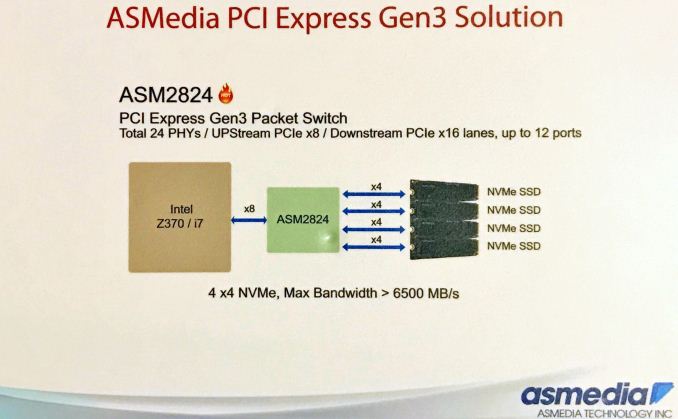
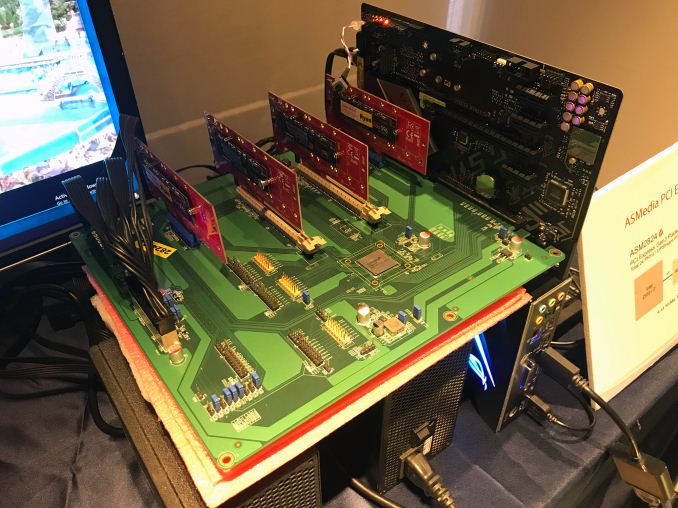

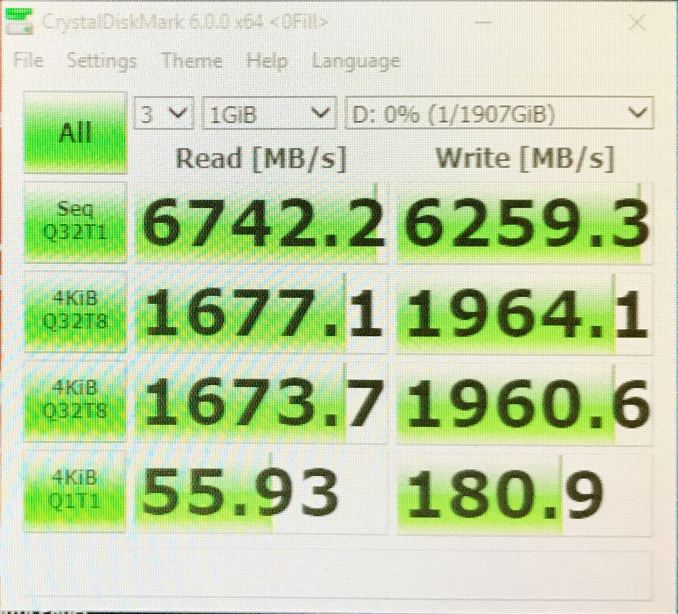
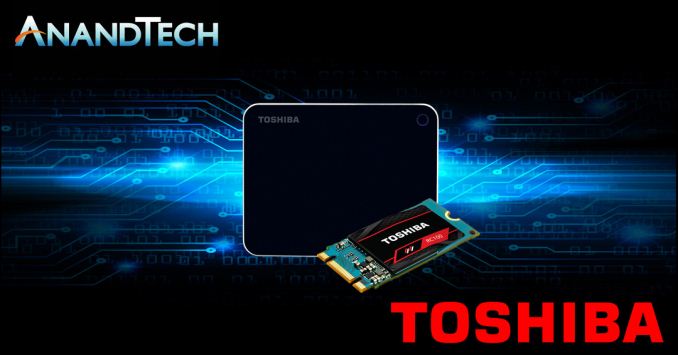
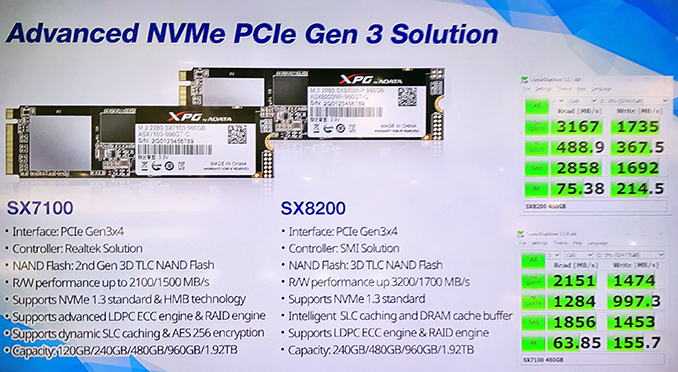
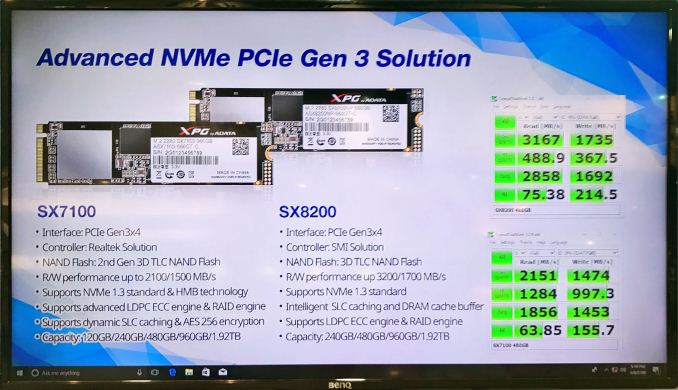
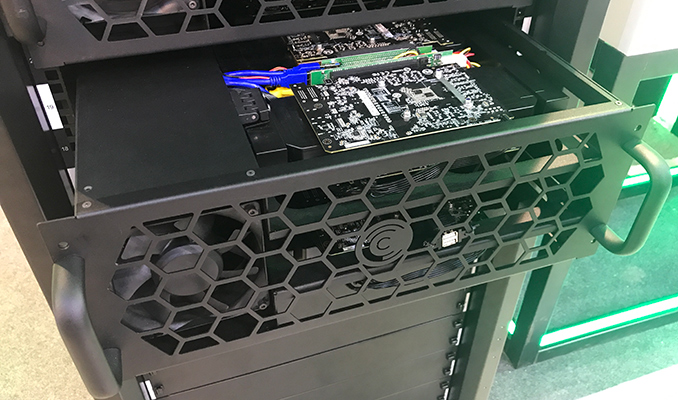
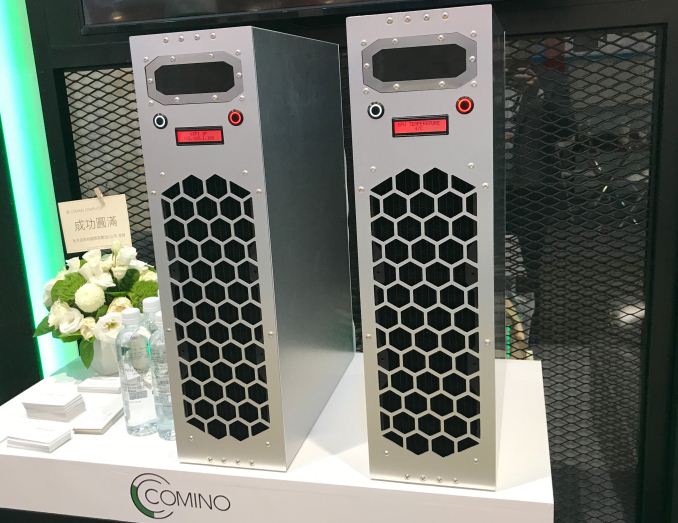
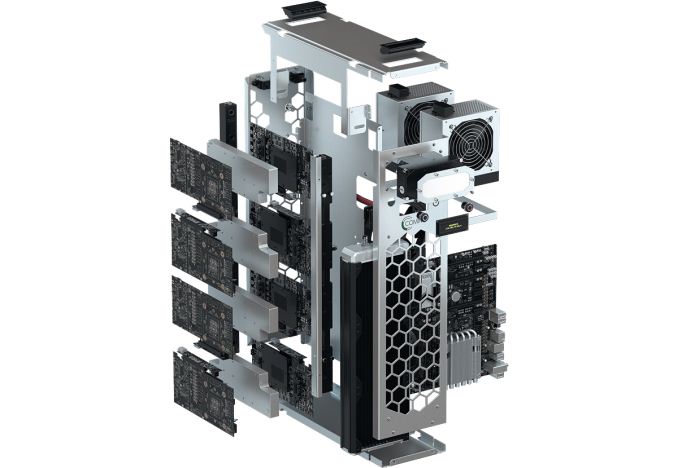
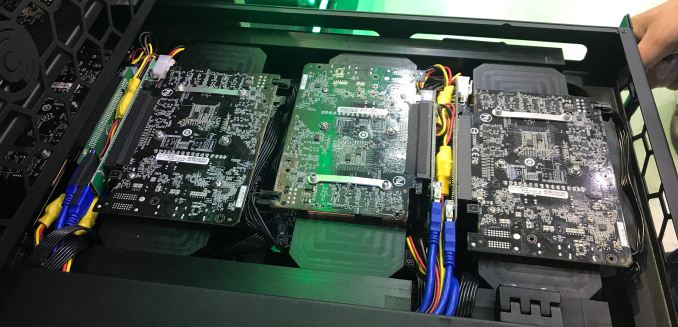
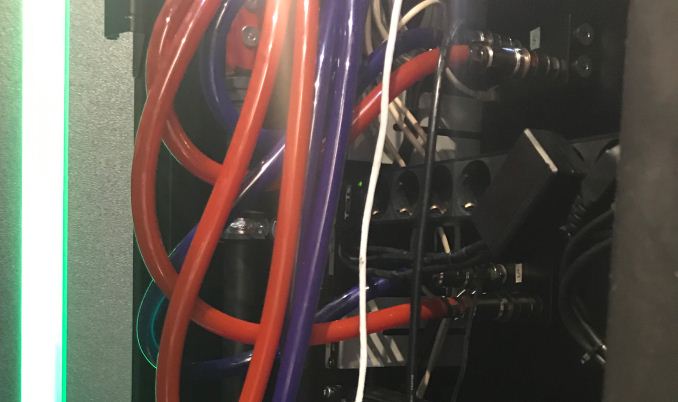
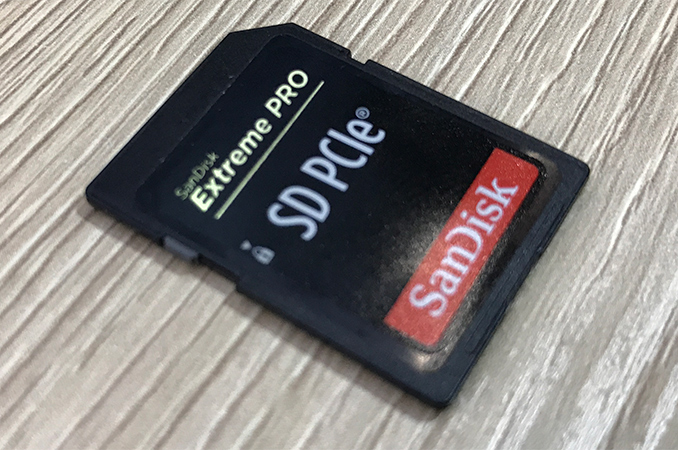
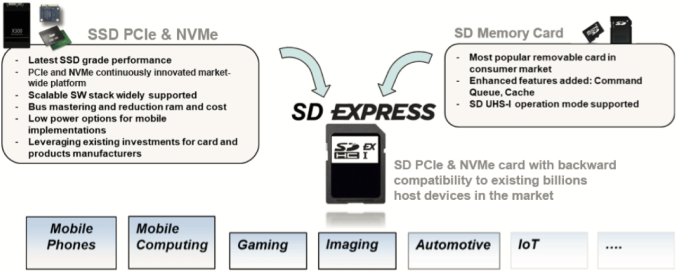

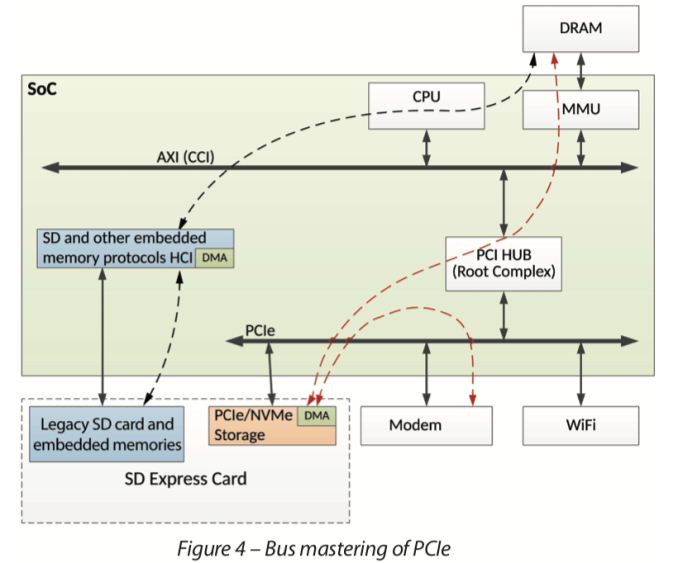
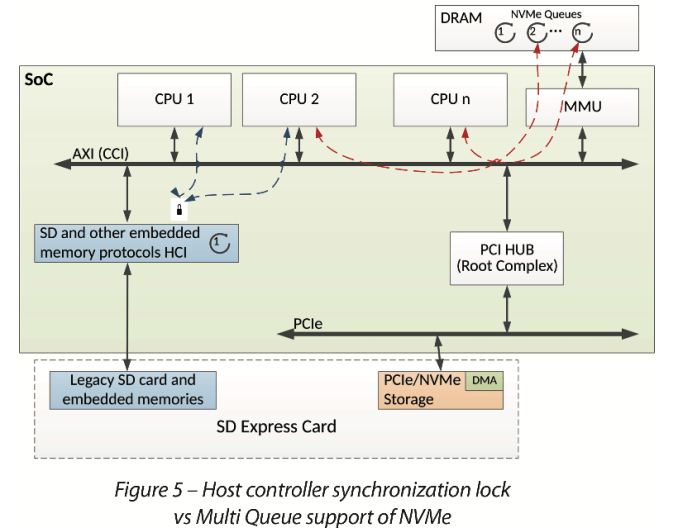
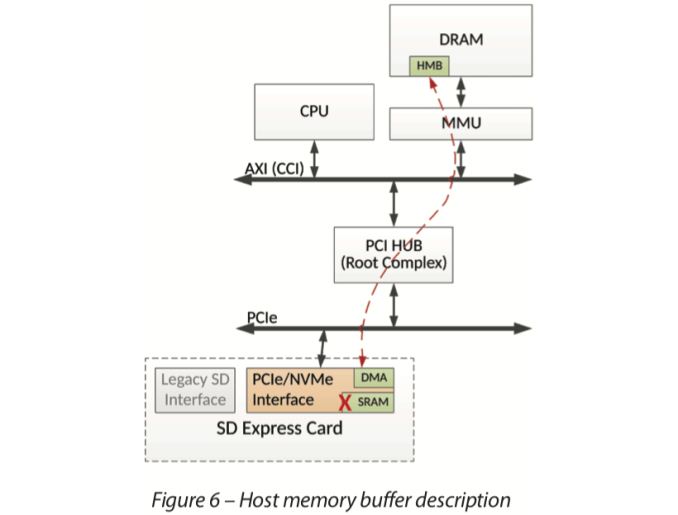
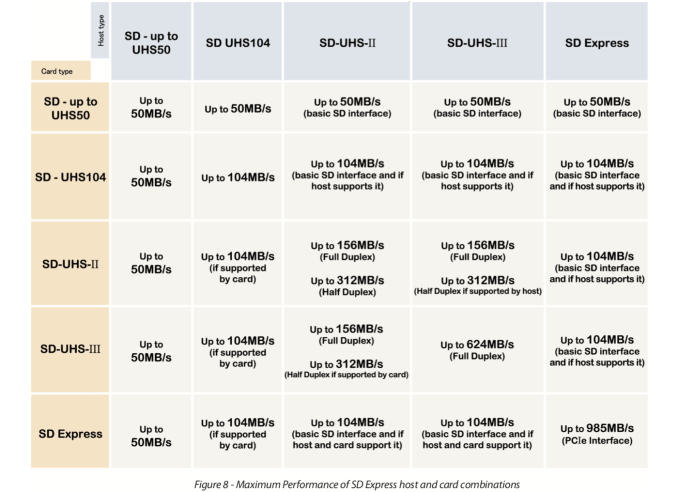
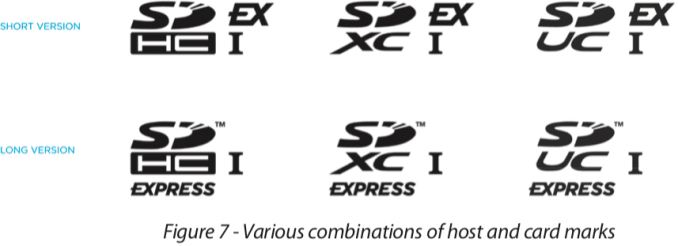
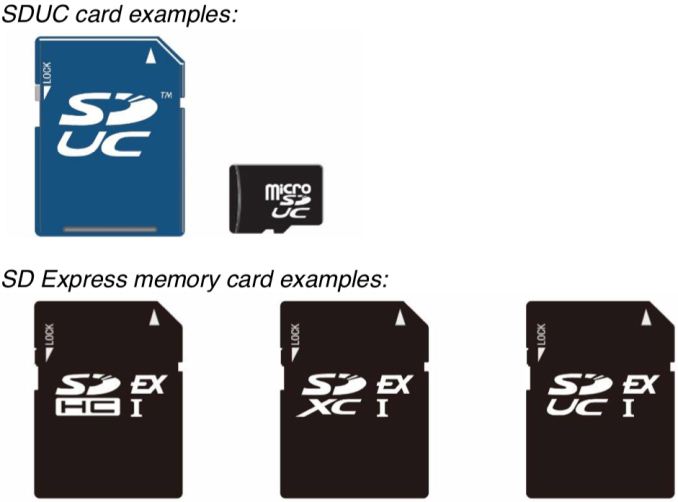
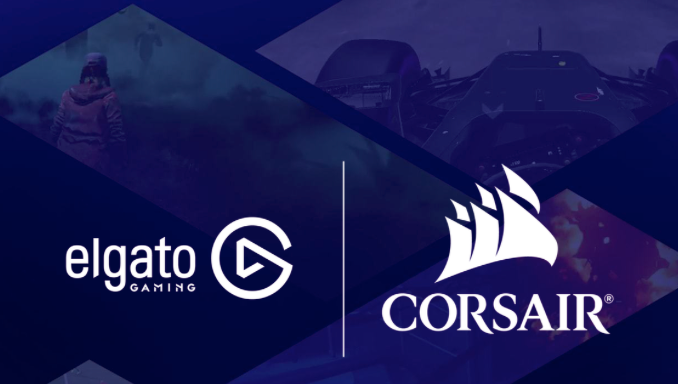
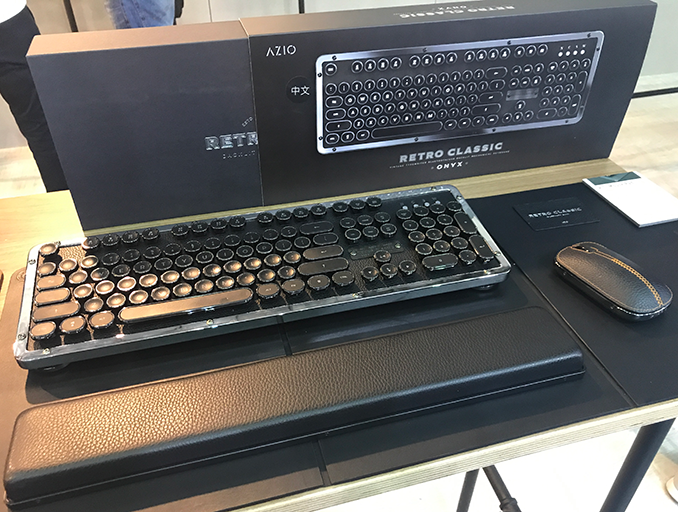
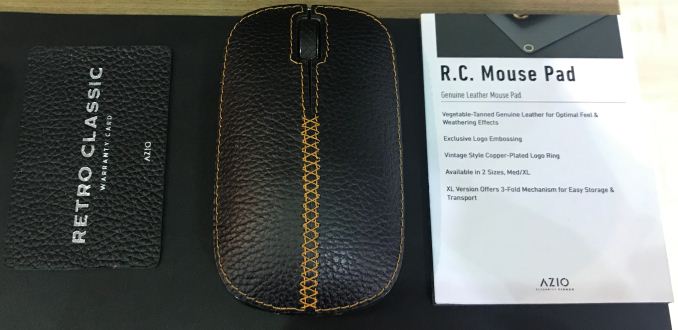
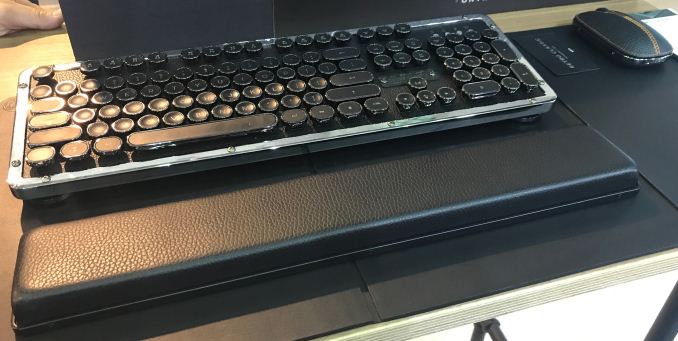
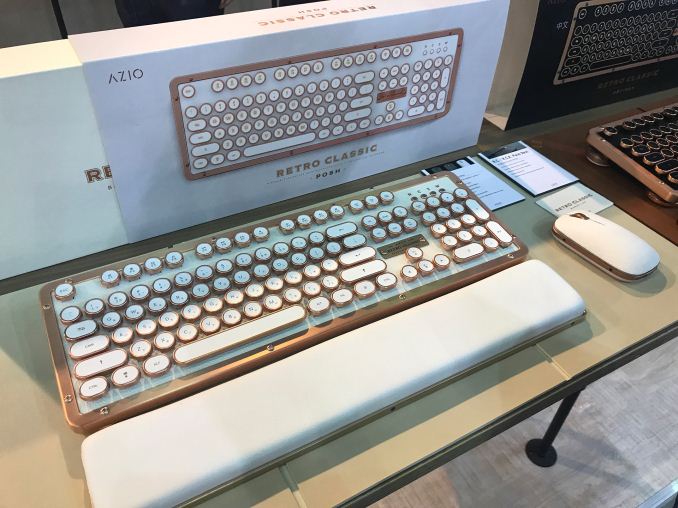
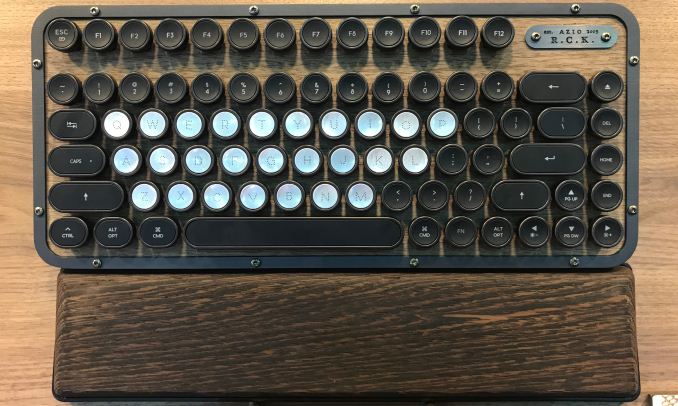
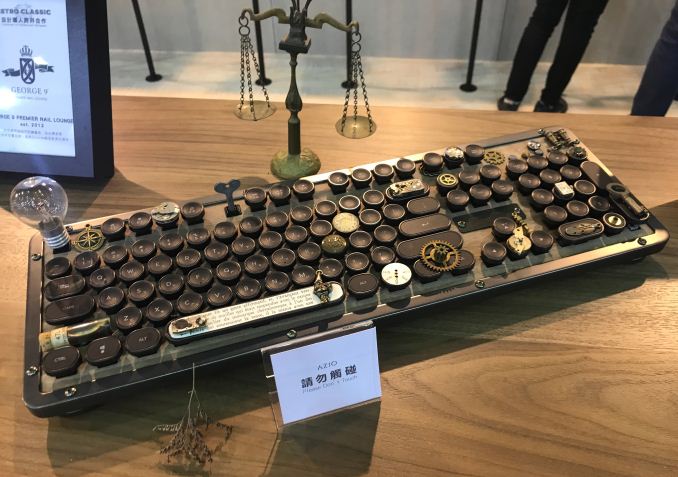

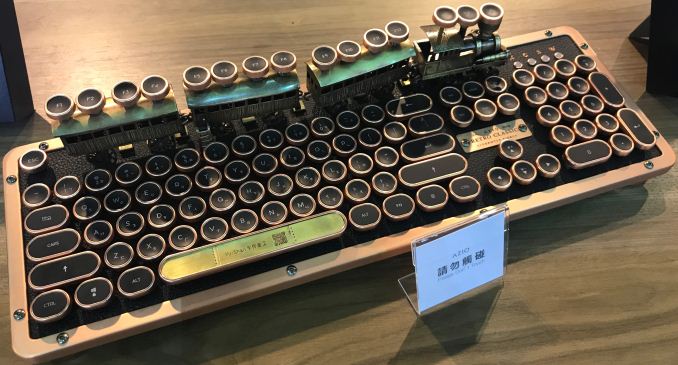

















Bookmarks